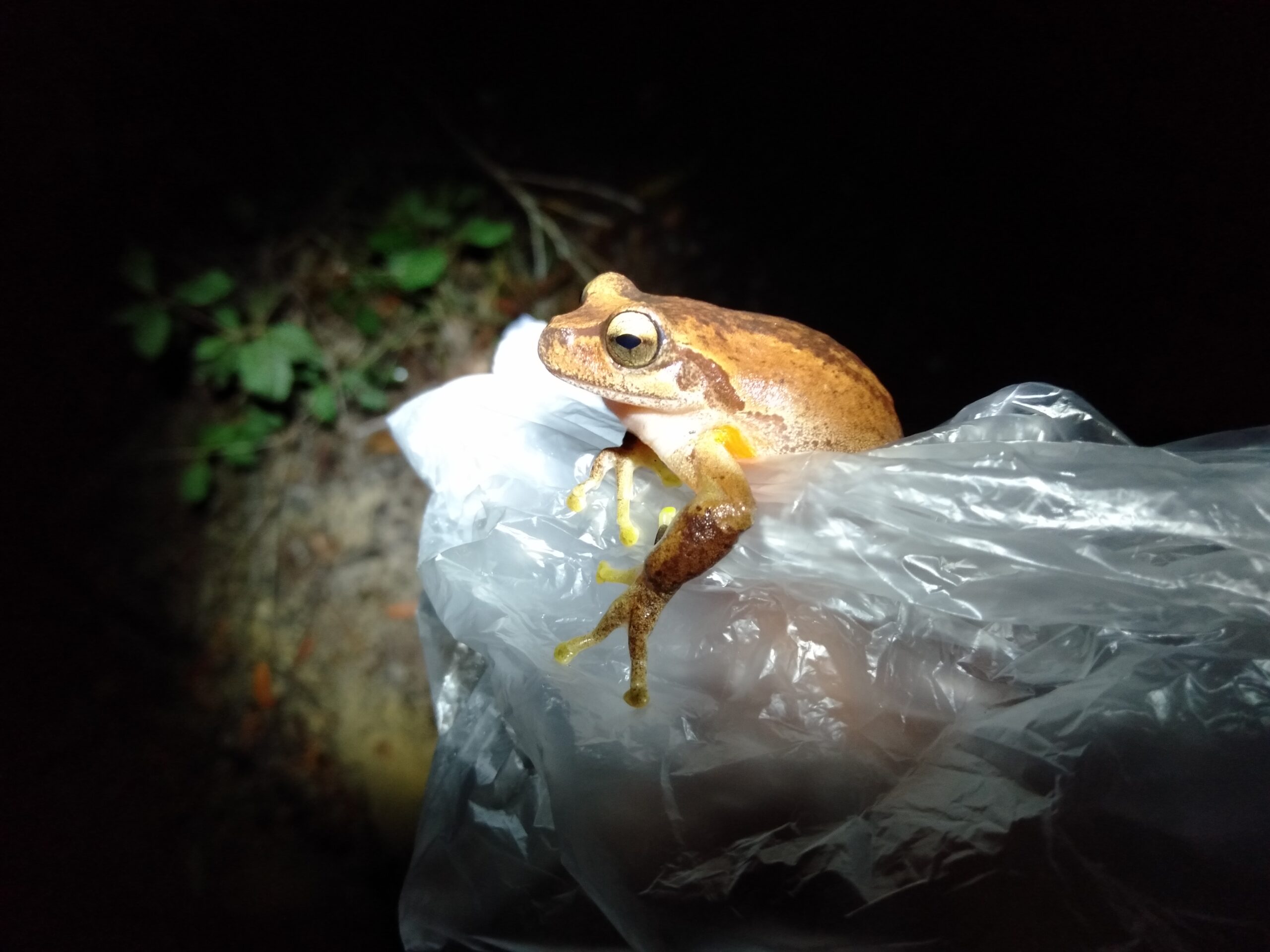Photo: And adult Littlejohn’s tree frog found during surveys © Klop-Toker, University of Newcastle.
In 2022, the University of Newcastle’s Conservation Science Research Group (CSRG) received government funding to carry out conservation actions for the endangered Littlejohn’s tree frog (Litoria littlejohni) aka the northern heath frog. For this project, CSRG partnered with the Department of Climate Change, Energy, Environment and Water; New South Wales (NSW) National Parks; and Forestry Corporation of NSW to create a series of ponds in the Watagan Mountains, Australia, aimed at boosting the size of this small inbreed population.

Student team sampling newly created ponds for L. littlejohni tadpoles. From Left, Clement Appadoo, Millicent Wade, Lily McGough. Photo © Kaya Klop-Toker, University of Newcastle.
During her PhD, CSRG student, Nadine Nolan, learnt that the Watagans’ population was experiencing genetic drift, which was splitting the population into two even smaller sub-populations with increased rates of inbreeding. In 2024, CSRG worked with the Forestry Corporation of NSW to create 35 more ponds to bridge the gap between the two sub-populations and reduce inbreeding. In March 2025, the CSRG team found Littlejohn’s tree frog tadpoles in eight of these newly created ponds – including in ponds that are >1.2 km from the nearest known historic breeding pond. This result demonstrates that Littlejohn’s tree frogs are using these new ponds for breeding and to disperse across the landscape. Future genetic testing by the CSRG team will determine where frogs are moving from, and if there has been mixing between the two sub-populations.
Littlejohn’s tree frogs were uplisted to endangered in 2022 after they were split from a closely related species, Litoria watsoni, now called Watson’s tree frog or the southern heath frog. This split left Littlejohn’s tree frog with only five known populations across three bio-geographic regions in state of NSW. The devastating Black Summer fires of 2019/20, which ripped across a third of Littlejohn tree frog’s range, highlighted how vulnerable this species is to such stochastic events. Furthermore, studies by the CSRG showed that each population is small, isolated, and experiencing high levels of inbreeding. Creating additional pond habitats that can boost rates of reproduction for this species, is one of several integrated strategies the CSRG are using to try and secure this species in the wild.
The CSRG are fortunate to have a multi-disciplinary team of scientists and students working on many different angles to improve northern heath frog conservation efforts. Some of the integrated research projects include: studying the species’ population genetics; trying to understand and mitigate the impacts of mining; captive breeding and optimising husbandry; IVF and cryopreservation; understanding the relationships between chytrid and environmental variables; and studying the physiological health, stress, hormones, and microbiome of northern heath frogs to learn how these variables may be affected by captivity and chytrid treatment. By combining a range of field and lab-based projects, we hope to uncover conservation strategies that work for northern heath frogs but can be applied to other threatened amphibians.
To keep up to date with the latest findings and progress of this work, please follow the CSRG Facebook page Conservation Science @ UoN or on our website www.csrg.site.
* Forestry Corporation’s completion of this part of the project was part of an enforceable undertaking with the Environmental Protection Agency after one of its contractors harvested 17 trees from Riparian Exclusion Zones in the Coopernook State Forest in December 2021.

